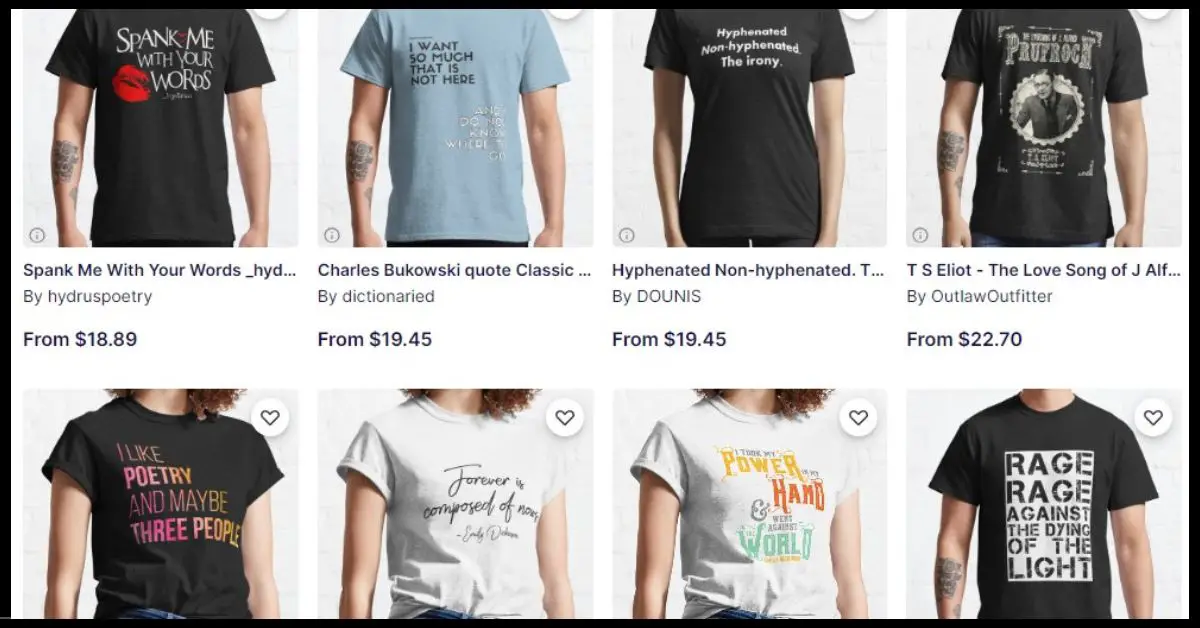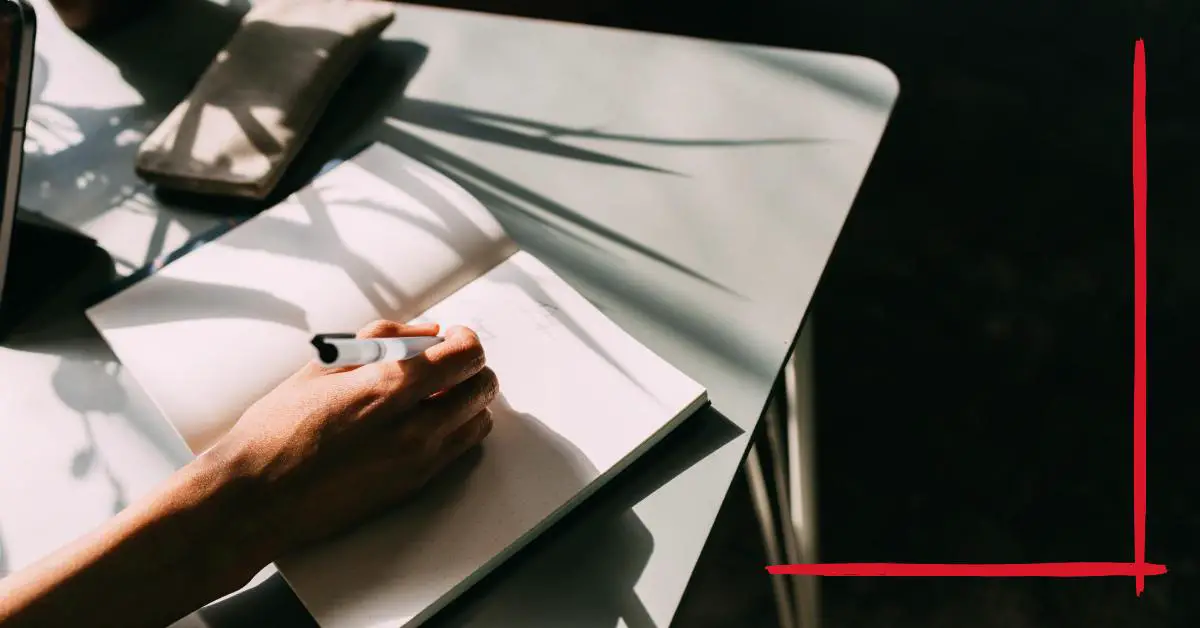Poetry writing techniques
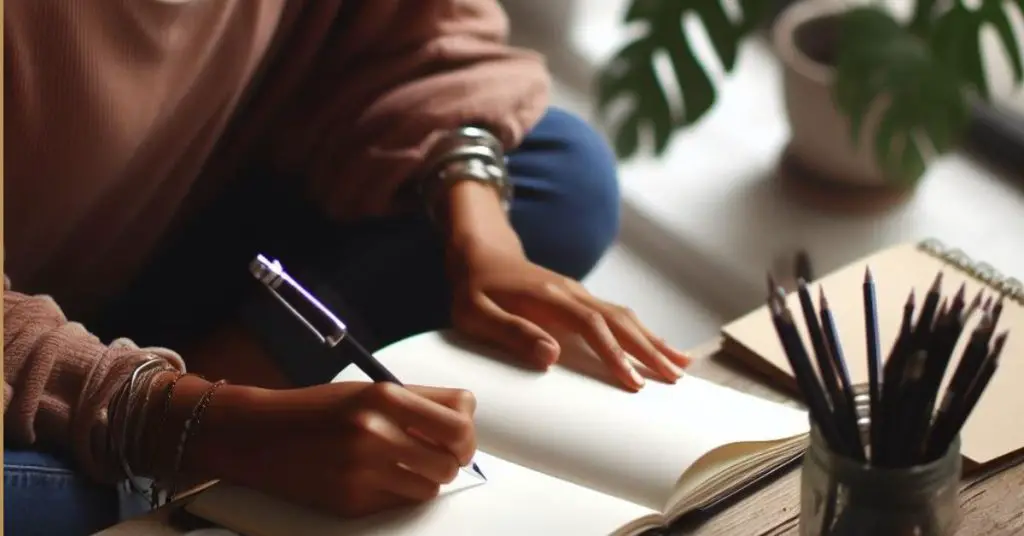
Diving into poetry can feel like wandering through a beautiful, mysterious forest—exciting but a bit intimidating.
The art of poetry is rich with techniques that transform simple words into emotional tapestries.
Our guide is your trusty map, showing you how to wield these techniques and craft verses that resonate and captivate. Get ready—your poetic journey awaits!
Key Takeaways
- Poetry needs techniques like rhyme, repetition, and onomatopoeia to make words come alive. These tools help create a rhythm that can make reading poetry feel like music or dance.
- Similes and metaphors are comparisons used in poetry to paint vivid pictures with words. They help the reader see and feel what the poet describes.
- Sound devices in poetry, such as alliteration, consonance, and assonance, add musical effects to poems. They catch our attention and enhance the mood of the poem.
- Hyperbole exaggerates for effect, while symbolism uses objects or actions to suggest deeper meanings beyond their literal sense.
- Techniques like enjambment keep readers moving through a poem, while meter sets up an underlying beat that guides how the poem is read aloud.
Table of Contents
The Importance of Poetic Techniques
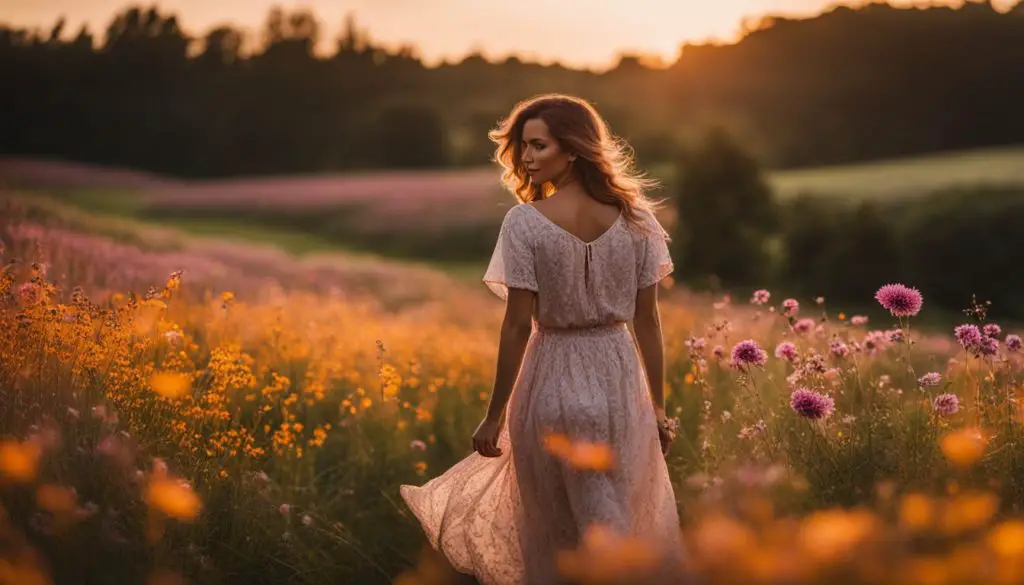
Poetic techniques shape the heart of poetry, breathing life into words.
They turn simple phrases into rich experiences and help readers feel emotions and see images in their minds.
Poets use tools like alliteration, assonance, and rhyme to make their work memorable.
These techniques give poems a rhythm that can make you feel like you’re dancing through the verses.
These tools also let poets express ideas in powerful ways. Similes compare one thing to another, painting pictures with words.
Metaphors take this further by saying something is something else entirely, deepening the meaning.
By mastering poetic devices, writers create worlds that readers can get lost in. They learn how to say more with less and connect deeply with those who read their creations.
Essential Poetic Techniques for Beginners
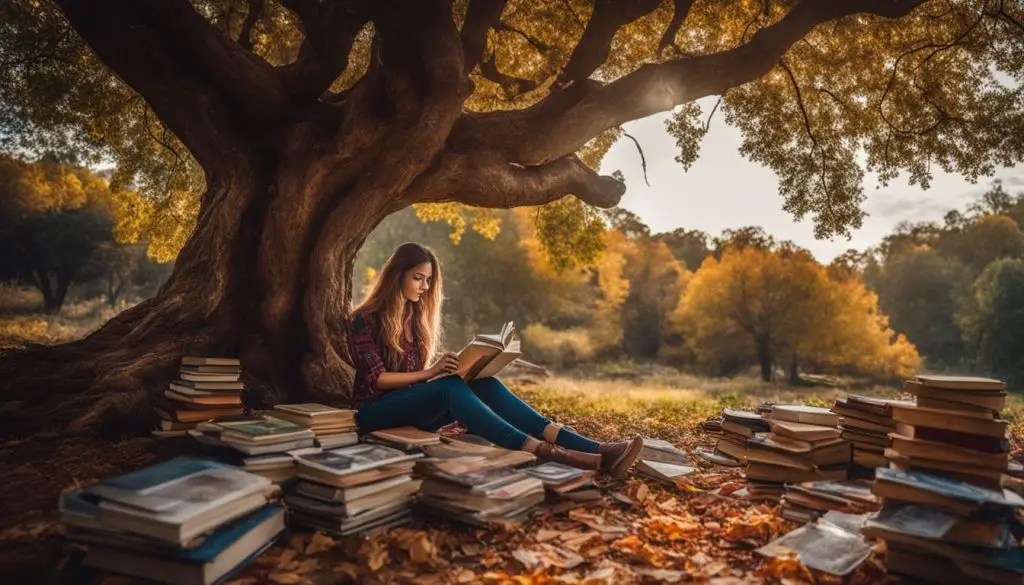
Embarking on the journey of poetry writing can be as daunting as it is exciting for beginners.
To craft verses that resonate and captivate, mastering a few essential poetic techniques is critical – these are the tools that will shape your raw thoughts into structured elegance and expressive power.
Rhyming
Rhyming creates a musical rhythm in poetry, making it more memorable and enjoyable to read or listen to.
Choose words that sound alike at the end of lines to establish a pattern; this is called an end rhyme.
Think about popular nursery rhymes you heard as a child; they stick with us because of their simple yet effective rhyming patterns.
To master musicality in your poems, mix up your rhyme scheme.
Experiment with internal rhymes where words within the same line sound alike or slant rhymes that are close but not exact matches.
The key is to create flow without sounding forced. Rhyming isn’t just for classic forms like sonnets or ballads—modern free verse can play with partial rhymes to add subtle harmony.
Repetition
Moving from rhyming to repetition, we dive into another powerful tool in poetry. Repetition hammers home a point or theme.
Poets like Sylvia Plath and T.S. Eliot used this technique masterfully to leave a lasting impact on their readers.
A repeated word or phrase can echo throughout a poem, tying ideas together and making the message stick.
For beginners, mastering repetition is about knowing why and where it’s effective. Use it to emphasize an emotion, create rhythm, or build tension.
It can make your poems more memorable and give them structure without saying too much.
Think of William Shakespeare and his knack for repeating lines that resonate long after you’ve read them – that’s the poetic power of careful repetition at work!
Onomatopoeia
Repetition captures attention, while onomatopoeia brings sounds to life. Imagine reading a poem and hearing the actual noise of what’s happening.
That’s what onomatopoeia does! Poets use this device to mimic sounds with words like “buzz,” “thump,” or “whisper.”
These words create an echo of real-life noises in your mind. Onomatopoeia doesn’t just tell you about the sound; it makes you experience it.
When poets pick these particular words, they paint a vivid picture with audio effects.
You can almost hear the raindrops tapping or the clock ticking when onomatopoeic words are woven into verses. It’s like adding a soundtrack to poetry!
Alliteration
Alliteration grabs your attention with the repetition of initial consonant sounds. Think of tongue twisters, like “She sells seashells by the seashore.”
In poetry, it’s a powerful sound device that poets use to add a musical rhythm and make their words memorable.
Imagine reading a line like “Whispering winds swept swiftly through the willows.” The repeated ‘w’ sound pulls you into the scene and makes the wind almost audible.
Using alliteration, poets can create an atmosphere or emphasize essential themes in their poetry.
It goes beyond just being catchy; it enhances mood and helps paint vivid pictures in your mind.
Look at Edgar Allan Poe’s “The Raven,” where he writes “, And the silken sad uncertain rustling of each purple curtain..” — this use of alliteration adds to the poem’s spooky vibe.
Now, let’s explore how assonance also contributes to poetic effect.
AssonanceAssonance adds a musical beat to poetry. It does this by repeating vowel sounds in the middle of words.
Think about how songs stick in your head; that’s what assonance can do in poems. It pulls you into the rhythm and sound.
Picture yourself reading these lines out loud: “The rain in Spain stays mainly in the plain.” Hear that?
The “ai” sound bounces around like a ball, tying the words together. By using assonance, poets make their work echo and hum, giving it a flow that feels natural.
Next up is simile – let’s see how it paints pictures with words!
Simile
The simile uses “like” or “as” to compare two different things. This shows how they are similar. A good simile helps readers picture the scene or feel the emotion.
It’s like painting with words! For instance, saying someone is “as brave as a lion” creates a clear image of courage in our minds.
Beginners can start using similes by thinking of everyday items and what they represent.
The night sky could be “like a blanket of stars,” or someone’s smile might be “like sunshine.” Similes add spice to writing, making it more vivid and expressive!
Metaphor
A metaphor is like a bridge that surprisingly connects two ideas. It’s not just saying something is similar to another; it’s boldly stating one thing IS the other.
For example, calling someone “the light of my life” means they’re more than just necessary – they brighten up your world like actual sunlight.
Poets use metaphors to make their writing powerful and vivid. They help you see ordinary things in new ways. Imagine saying, “Life is a rollercoaster.”
Suddenly, you feel the ups and downs, twists and turns of life experiences without needing any extra words. That’s the magic of using metaphors!
Hyperbole
Just like a metaphor can colour your poetry with vivid comparisons, hyperbole takes it up a notch by adding strong exaggeration.
Hyperboles are bold statements that stretch the truth for effect.
Imagine saying, “I’m so hungry I could eat a horse.” You don’t mean it literally, but it sure does express hunger in a big way!
Using hyperbole in your poems can create humour or show deep emotions.
It’s like saying your heart shattered into a million pieces when you’re sad—everyone knows you mean really heartbroken, not an actual broken heart.
This technique grabs attention and makes feelings larger than life!
SymbolismSymbolism in poetry goes beyond the literal meaning of words.
Poets like Sylvia Plath and T.S. Eliot packed their works with symbols to add depth to their poems.
A symbol can be an object, a person, a situation, or an action that suggests more than its literal meaning.
It often points to ideas and emotions without directly stating them. For example, a rose might symbolize love or beauty; winter could represent death or old age.
Mastering symbolism takes time and practice, but it’s worth the effort.
Not only does it enrich your writing with multiple layers of meaning, but it also engages readers as they uncover more profound significance behind your verses.
Dive into this technique by identifying objects or elements in life that evoke robust responses for you—these could become your go-to symbols!
Understanding the Effects of Poetic Techniques

Delving into the world of poetic devices isn’t just about fancy words or complex ideas.
It’s about grasping how these techniques breathe life into verses, giving them a pulse that resonates with readers and listeners alike—let’s explore how they do just that!
Enriching the Imagery
Use vivid words to paint pictures in the reader’s mind. Think of strong, sensory language that can show readers a scene rather than tell them about it.
For example, instead of saying “the sunset,” describe how the sky blazed with streaks of orange and purple as the day faded into twilight.
This technique draws readers into your poem and lets them see what you see.
Symbolism adds depth to poetry by connecting elements to larger themes or ideas. A simple object like a rose could symbolize love or beauty.
It might also represent something more complex, like the fleeting nature of time.
By weaving symbols throughout your work, you invite readers to look beyond the surface and find deeper meaning in your words.
Enhancing the Sound
Just as vivid images captivate our eyes, sounds in poetry grab our ears. Poets use sound-based techniques to give their work a musical quality.
Sounds can flow smoothly or jar against each other—both effects serve a purpose. Euphony creates gentle and pleasing rhythms that can soothe the reader.
Alliteration uses repeated starting consonant sounds, like “slippery slope,” to make lines stick in your head.
Cacophony is another powerful tool; it’s noise on the page! Harsh-sounding words clash and create tension or show conflict.
Think about how cacophonous words might make you feel anxious or excited.
Skilled poets mix these elements carefully. They know just when to calm with sweet assonance or startle with a crack of consonants!
Deep Dive into Specific Techniques

Journey beyond the basics as we explore a treasure trove of unique and nuanced poetic devices that can transform your writing, elevating it from simple verses to profound poetry—there’s so much more to discover.
Anaphora
Anaphora grabs attention and adds emphasis by repeating the same word or phrase at the beginning of multiple lines or sentences.
Think of Martin Luther King Jr.’s famous “I Have a Dream” speech, where he used anaphora to hammer home his vision.
This technique can create a strong emotional effect, making specific ideas stick in your reader’s mind. Poets often use it to express passion or drive home a point.
But that’s not all – anaphora works wonders in setting the rhythm in poetry, much like a drumbeat that gets listeners nodding along.
It helps build up anticipation leading readers through a series of thoughts, each starting with those familiar repeated words.
Let’s explore Metonymy & Synecdoche next, where we replace terms with others that are closely related but strikingly different.
Metonymy & Synecdoche
Metonymy and synecdoche are like secret codes in poetry. They pack a punch, squeezing big ideas into just a few words.
With metonymy, poets swap out a word with something closely related to it—think “The White House said” instead of “The President said.” It’s all about association.
Synecdoche is similar but takes a small slice to represent the whole pie.
When a sailor shouts, “All hands on deck!” he doesn’t mean just hands; he means whole sailors!
These techniques aren’t just showy tricks; they deepen meaning and connect readers to the poem’s heart.
Imagine finding little treasure boxes within the lines that unfold layers of significance as you peek inside—that’s what these devices do in every verse they touch.
Enjambment & End-Stopped Lines
Enjambment pulls you along. Imagine reading a poem when suddenly, a line jumps to the next without stopping.
That’s enjambment for you – it creates excitement and an urge to see what comes next.
It’s like a mini cliffhanger after each line! Poets use this technique to keep your eyes moving down the page.
End-stopped lines do the opposite. They make you pause and think about what you just read because they finish with punctuation, like a period or comma.
Each end-stopped line is like taking a breath before diving into the next thought or image in the poem.
This gives each phrase its own space, shaping how you experience the rhythm and flow of the words.
Zeugma
Zeugma is a fun tool in your poetry kit. Imagine one-word pulling double duty in a sentence, linking two thoughts together.
It’s like using “open” to talk about both a door and a heart at the same time! With zeugma, you make your poem sharper and give your readers something clever to think about.
For example, you could say, “She broke his car and his heart.” See how “broke” works for both parts?
That’s Zeugma doing its magic. It makes poems more potent with fewer words. Use it wisely, and watch your verses come alive!
Internal & End RhymeInternal rhyme spices up a poem by using words that rhyme within the same line.
This technique creates a beat that makes reading poetry feel like listening to music. Picture hearing “The Cat in the Hat” and feeling the rhythm it adds to Dr. Seuss’s work.
End rhyme happens at the ends of lines, giving poems a structured sound. It’s what you hear in classics like Shakespeare’s sonnets—rhymes closing each line bring it all together.
Imagine reading, “Twinkle, twinkle, little star; How I wonder what you are.”
The ending words “star” and “our” create end rhymes that stay with us long after we finish reading.
Both internal and End rhymes make poetry memorable and enjoyable. They give life to verses and help poets craft works that readers love to echo time after time.
Consonance & Assonance
Just like internal and End rhymes add spice to poems, consonance, and assonance enrich the sound, too.
Consonance is all about repeating consonant sounds in close proximity. Think of it as a subtle drumbeat that gives your poem rhythm without overpowering the words.
It often comes at the End of lines but can pop up anywhere.
Now, let’s talk about assonance—the repeated vowel sounds in neighbouring words.
This technique creates harmony and can make your poem sing! Mix up short and long vowel sounds for a melody that dances through your lines.
Use these tools wisely, and you’ll craft verses that stick with readers long after they’ve finished reading.
Euphony & Cacophony
Moving on from the smooth and repetitive patterns of consonance and assonance, let’s explore euphony and cacophony.
These elements colour your poetry with soundscapes that can soothe or startle the reader.
Use euphony to craft lines that flow like a musical stream, guiding readers through your poem with sounds that please the ear. Think of words that whisper, hum, or sing.
In contrast, bring in cacophony when you want to shake things up. Harsh-sounding words crash together, creating tension and dissonance.
It’s like the clattering of pots and pans interrupting a tranquil melody.
This technique works well to convey chaos or discomfort within your poem’s narrative—loud whispers in a quiet room demanding attention.
Choose each word carefully for its sound; it can change how someone feels about your poetry just by hearing it aloud!
Meter
Shifting from the melodic flows of euphony and cacophony, we land on the structured beats of meter.
Meter gives poetry a rhythm, much like a heartbeat within a line. Think of it as the poem’s underlying music that guides the reader’s voice.
Classic poems often use iambic pentameter – that means five iambs per line, where one iamb is an unstressed syllable followed by a stressed one.
There are other rhythmic patterns, too, such as trochees with their heavy first beat or dactyls dancing to three syllables with stress at the start.
Even modern poets play with a meter to give their words pulse and pace; they might need to avoid mixing up metrical feet or craft lines without any apparent pattern on purpose for effect.
Meter isn’t just old-school – it evolves but always brings order and tempo to verses across ages.
Using Poetry Techniques in Comparisons and Analysis
Poetry techniques can turn simple comparisons into vivid paintings for the mind.
Take similes and metaphors; they don’t just say one thing is like another; they make us see the connection.
A poet might write “time is a wave” to show how moments rush at us and then slip away.
With hyperbole, poets stretch the truth so we feel their strong emotions or understand their grand ideas.
Good poetry analysis digs deep into these techniques. It shows why a poet chose specific words and structures to create an effect.
Look closely at Robert Frost’s poem “Stopping by Woods on a Snowy Evening”. Notice his use of iambic tetrameter, which gives a calm, steady rhythm—it’s like the quietness of falling snow!
As you analyze poems, look for repeated sounds in alliteration or assonance, too. These sounds can tie lines together musically or emphasize important points.
When you compare poems or analyze one work sincerely, always seek out these crafted details.
They reveal how skilled poets guide our thoughts and feelings through verse—like conductors with words instead of batons.
With this approach to poetry analysis, every read uncovers something new—even if it’s your tenth time through the same stanza.
Now, let’s move forward and explore some concluding thoughts on poetic techniques..
Concluding Thoughts on Poetry Writing Techniques
Ready to dive into poetry? Grab your pen and let these nine techniques be your guide. Play with sounds, shape your verses, and paint with words.
Remember, each technique adds a unique flavour—mix them well for a powerful poem. Now go forth and create; the world awaits your verses!
FAQs
1. What are some basic poetry writing techniques for beginners?
Start by exploring figurative languages, such as metaphors and similes, to paint vivid images with your words. Try using different metrical patterns like iambic pentameter or trochaic tetrameter to give your poem rhythm.
2. How can I make my poetry sound more pleasing to the ear?
Use euphonious devices like alliteration—the repetition of consonant sounds at the start of words—or similar vowel sounds within lines for a musical effect.
3. Can you explain what blank verse is in poetry?
Blank verse is unrhymed iambic pentameter—each metrical line has ten syllables, with every second syllable stressed. It’s common in English literature and gives a natural flow to the poem.
4. Why should I use poetic forms like haikus or villanelles?
Poetic forms such as haikus and villanelles have specific structures that challenge you creatively while guiding your expression—with these forms, even strict rules can spark creativity!
5. Is rhyme necessary in modern poetry?
Not at all! While rhyming couplets add charm, modern poets often write free verse without rhyme schemes or regular meter—it’s all about your style and message.
6. What if I’m struggling with how to begin writing my poem?
No worries—try free writing or brainstorming ideas without worrying about form first; this can kick-start your creative process! Once you have some thoughts down, then play with meters and stanzas.
